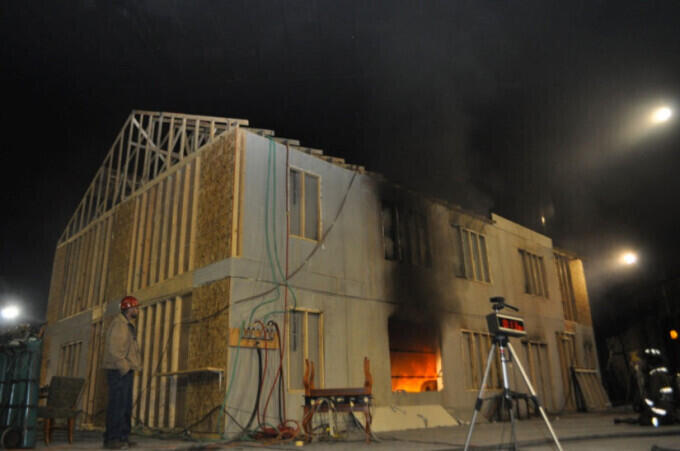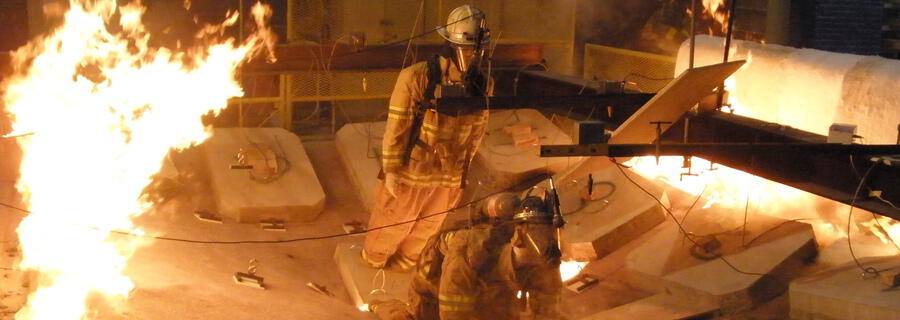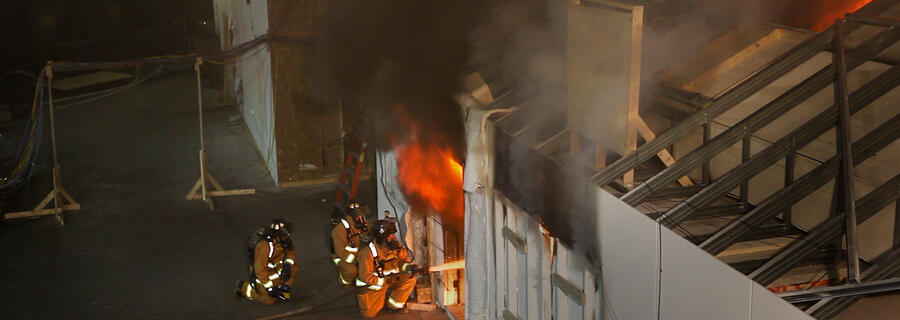Under the United States Department of Homeland Security (DHS) Assistance to Firefighter Grant Program, UL examined fire service ventilation practices and the impact changes in modern home geometries have had upon fire behavior. There has been a steady change in the residential fire environment over the last several decades, including larger homes, open floor plans and increased synthetic fuel loads. Through this research, UL developed empirical data needed to quantify the fire behavior associated with these scenarios and develop practices to reduce firefighter injury and death.
UL constructed two houses in its large fire facility in Northbrook, IL. The first was a one-story, 1200 ft2, 3 bedroom, 1 bathroom house with 8 rooms. The second was a two-story 3200 ft2, 4 bedroom, 2.5 bathroom house with 12 total rooms, and featured a modern open floor plan, two-story great room and open foyer. Fifteen experiments were conducted varying the ventilation locations and the number of ventilation openings. This included ventilating the front door only, opening the front door and a window near and remote from the seat of the fire, opening a window only, and ventilating a higher opening. One scenario in each house was conducted in triplicate to examine repeatability.
The results of these experiments enable the fire service to examine and update current thought processes, tactics, standard operating procedures and training content.





